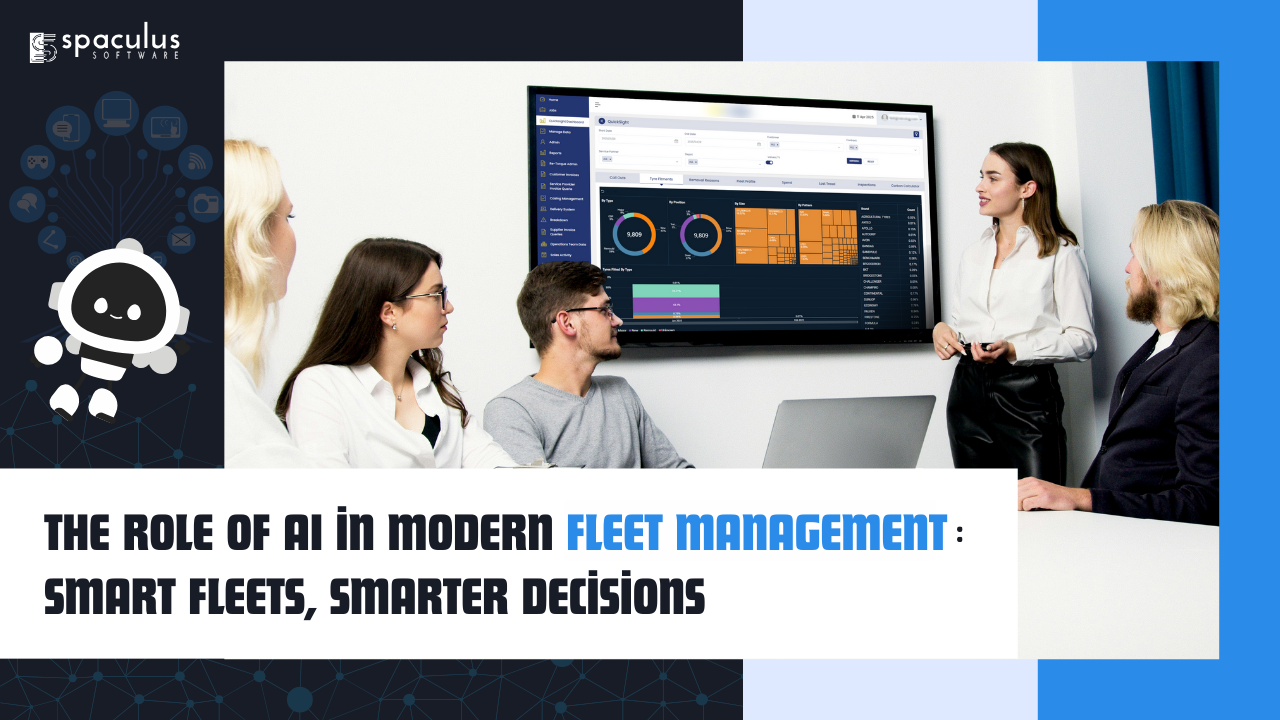
Delays happen.
Vehicles break down.
Fuel costs rise.
Drivers quit.
Managing all this at once is not easy.
Most fleet managers are always reacting.
That’s exhausting.
This is where AI in Fleet Management becomes a real advantage.
It doesn’t just track data.
It helps you plan smarter.
It spots issues early.
And it reduces waste, risk, and delays.
AI in fleet management means using smart tools to monitor and manage your fleet.
These tools connect to vehicles, GPS, apps, and sensors.
They collect data like fuel use, idle time, or engine wear.
Then they process it in real-time.
That way, AI gives helpful alerts and suggestions without waiting for reports.
It works constantly, even when your staff sleeps.
If you’re exploring how to implement such systems, partnering with an AI Development Company can help you build custom solutions tailored to your fleet’s needs.
Whether it’s a trucking company or a taxi firm, managing a fleet today is complex.
AI helps simplify that complexity.
Here’s what many fleet owners struggle with:
| Problem | Impact on Business |
| Rising fuel prices | Higher monthly costs |
| Sudden vehicle breakdowns | Missed jobs and unhappy clients |
| Driver turnover | Hiring and training costs |
| Manual record-keeping | Wasted time and errors |
| Route delays | Poor customer satisfaction |
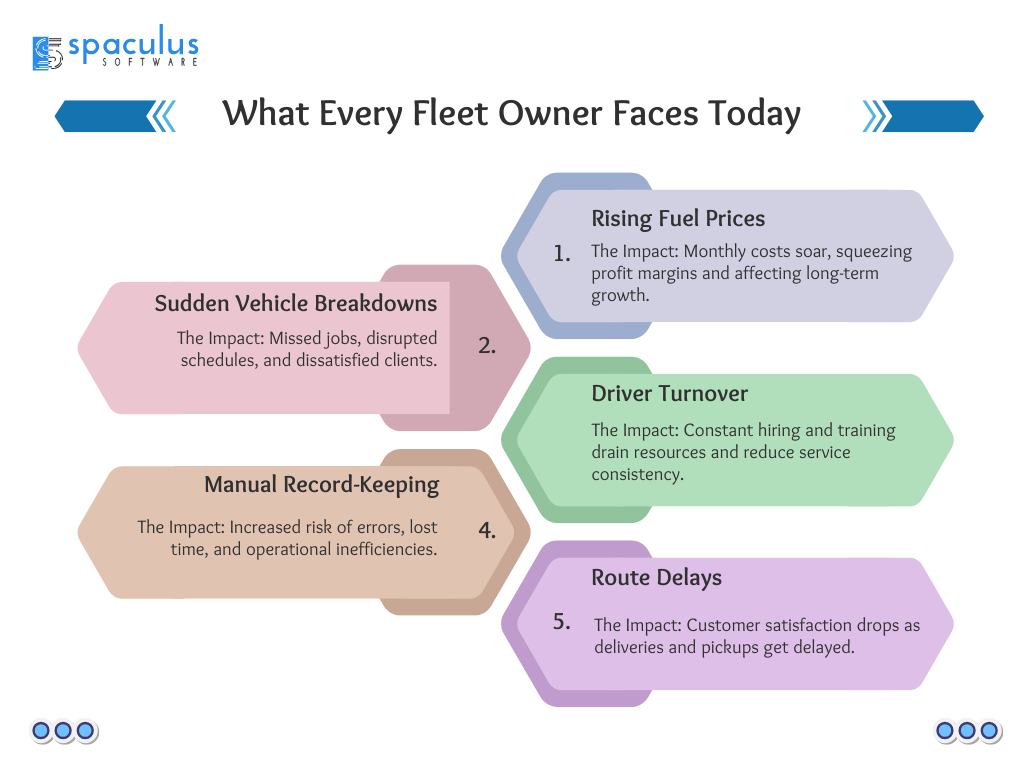
Instead of checking 10 different reports, AI gives you one view.
That view includes vehicle location, fuel waste, and even driving behavior.
AI tools keep learning from past data and give better suggestions over time.
Let’s look at a real scenario.
A company manages 120 vehicles across 4 cities.
Before using AI, they had 20 vehicle breakdowns per month.
Fuel cost: around $50,000 monthly.
20% of deliveries were late.
They added AI tools for routing, maintenance, and driver scoring.
After 6 months:
That’s $8,000 saved every month
And more reliable service.
The benefits of AI go far beyond tracking location.
It helps improve planning, reduce stress, and give you data you can act on.
| Business Focus | AI Benefit |
| Efficiency | Fewer delays and faster deliveries |
| Cost control | Lower fuel and repair bills |
| Compliance | Reports handled automatically |
| Driver retention | Coaching and support through smart feedback |
| Insurance savings | Proof of safety lowers premiums |
Here’s how AI operates without disrupting your team.
The vehicle sensors collect data like speed, engine heat, and fuel burn.
AI tools then detect patterns and send alerts before trouble happens.
| Step | What Happens |
| 1 | GPS, engine, and mobile apps is gathered instantly |
| 2 | AI checks this data for patterns or problems |
| 3 | Alerts are sent for high-risk situations |
| 4 | Routes or schedules are updated as needed |
| 5 | Dashboards update with clean, useful reports |
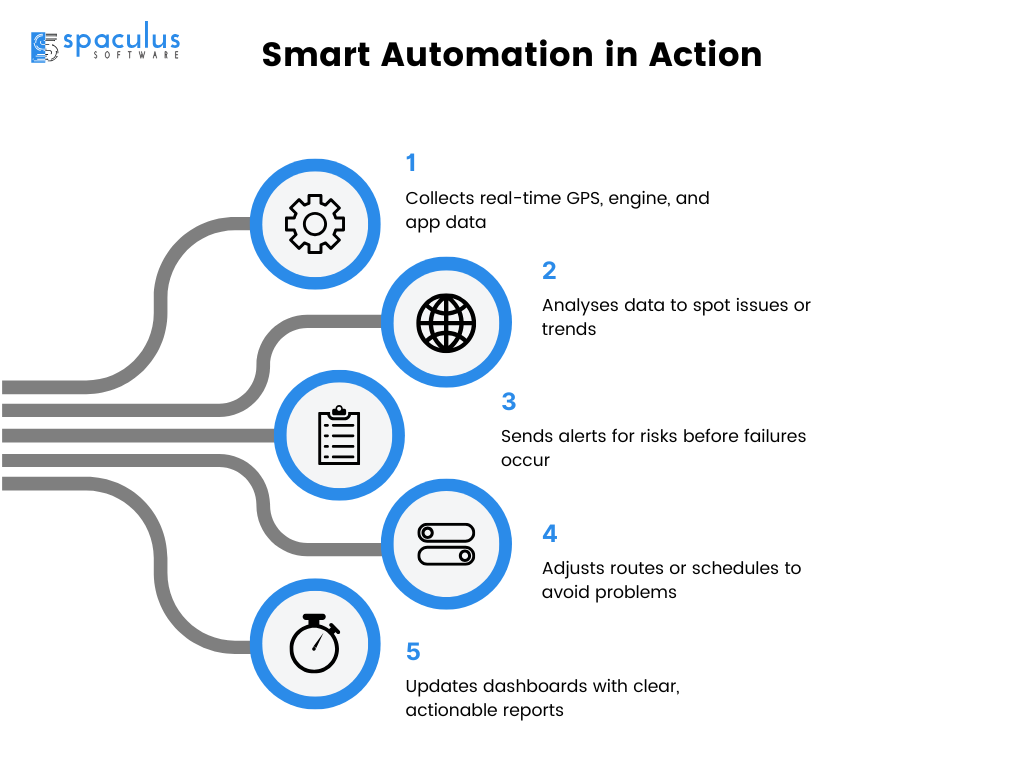
Some tools are part of existing software.
Others
| Tool Type | Purpose |
| Telematics Systems | Track vehicle movement and engine status |
| AI Dashcams | Detect distracted or aggressive driving |
| Predictive Maintenance | Warn about likely repairs needed soon |
| Smart Routing Tools | Avoid traffic and find the shortest paths |
| Driver Apps | Log breaks, deliveries, and feedback |
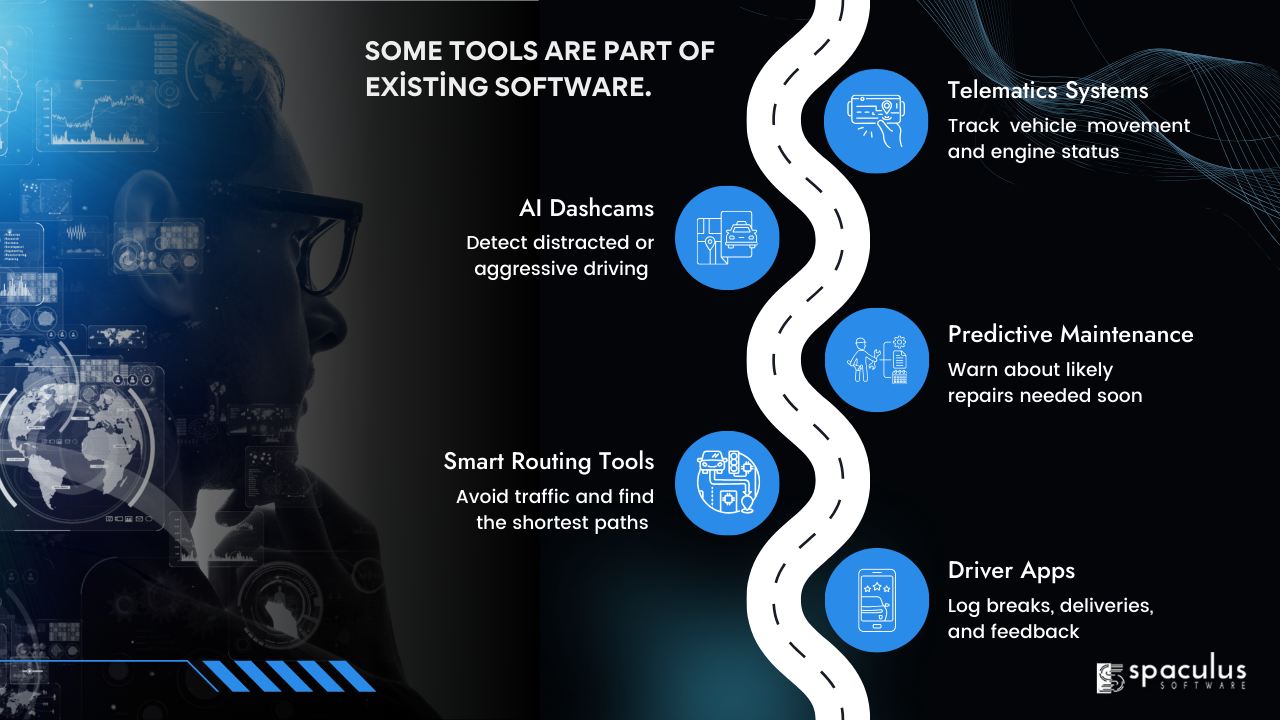
Different fleets use AI in different ways.
| Fleet Type | AI Use Case |
| Logistics trucks | Load balancing and stop optimization |
| Taxis | Smart dispatch and surge demand prediction |
| Construction | Equipment tracking and idle-time alerts |
| Delivery vans | Route planning and delay prevention |
| Bus fleets | Passenger volume and route accuracy |
AI depends on accurate and timely data.
| Data Type | Where It Comes From |
| Location | GPS trackers |
| Speed | OBD sensors or dashcams |
| Fuel usage | Vehicle sensors and route analytics |
| Driver behavior | Dashcam analysis and mobile app tracking |
| Traffic/weather | API services like Google Maps or OpenWeather |
Here’s the key part.
Does AI in Fleet Management save more than it costs?
In most cases, yes — if done right.
| Fleet Size | Estimated Monthly Cost | Example Tools Included |
| 5–15 vehicles | $150 – $400 | GPS tracking, basic maintenance AI |
| 16–75 vehicles | $500 – $1,200 | Full driver analytics + routing |
| 76–250+ | $1,500 – $3,500+ | Dashcams, maintenance, full stack |
Now let’s look at what that means for your pocket.
Say your fleet has 40 vehicles.
You spend about:
You invest in an AI solution that costs $950/month.
Here’s what happens after 3 months:
You now save around $6,500/month.
That’s $78,000 per year saved for a $950/month spend.
Your AI tool pays for itself in just 15 days.
And your team works with less stress and better data.
AI brings power.
But it must be used with care.
Trust helps retention.
Transparency builds morale.
Even great AI tools fail when misused.
Watch for these common problems:
Start small.
Scale what works.
| Trend | Impact |
| AI + EV integration | Tracks battery health and charger locations |
| Smart driver coaching | Live feedback for risky driving |
| AI-based insurance | Safer fleets = lower premiums |
| Voice-based AI support | Hands-free control in vehicles |
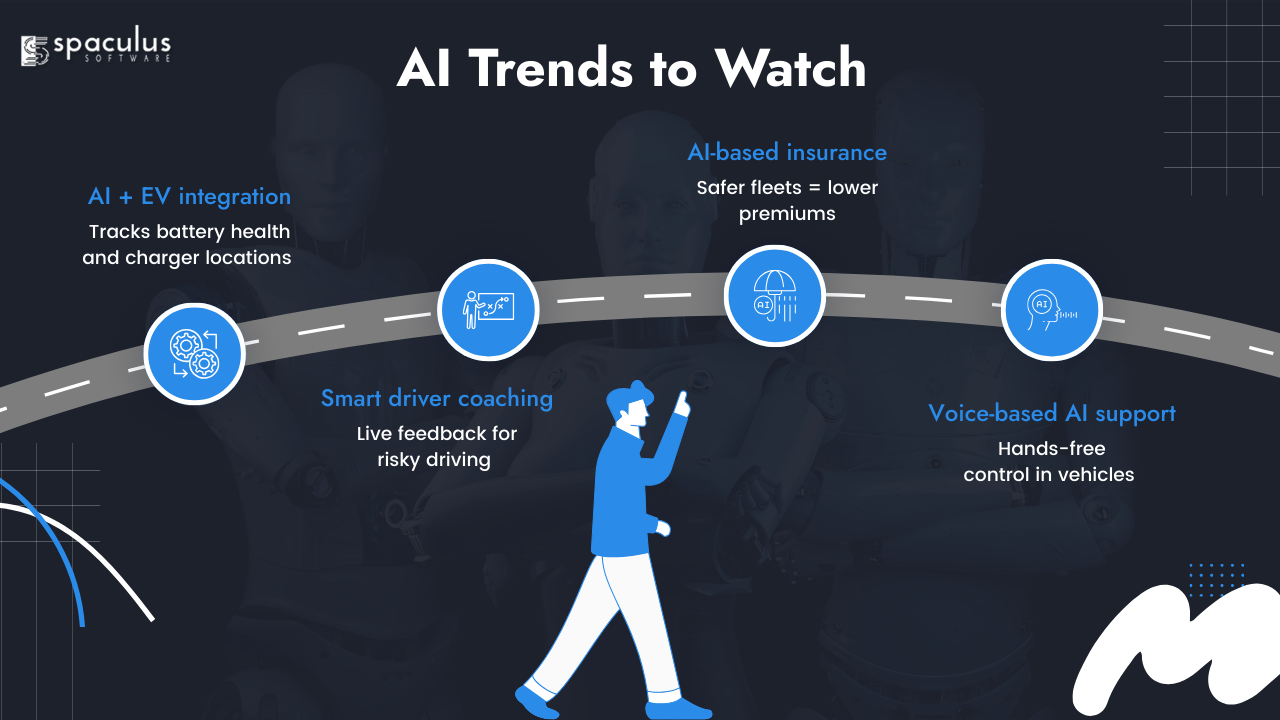
AI in Fleet Management is no longer a future plan.
It’s already solving daily problems.
You save time, lower cost, and reduce risk.
Start with one simple tool.
Track results for a month.
Then expand what works.
Smart fleets don’t just move faster.
They make better choices every day.